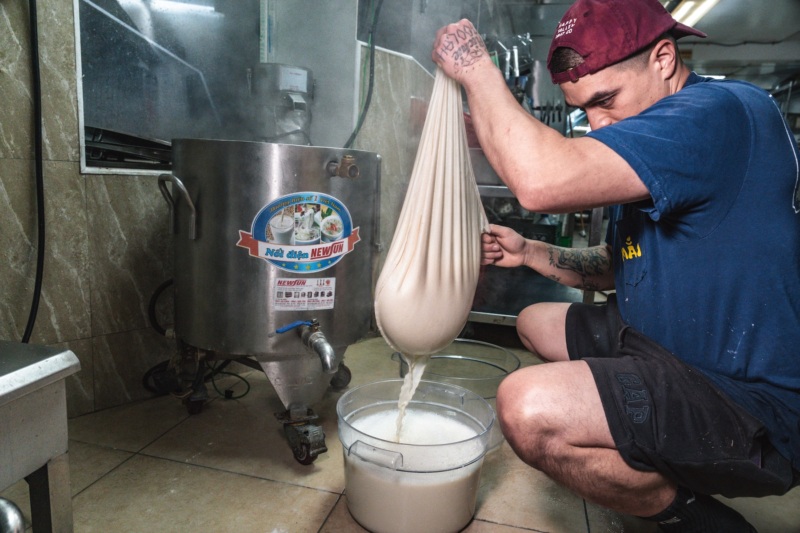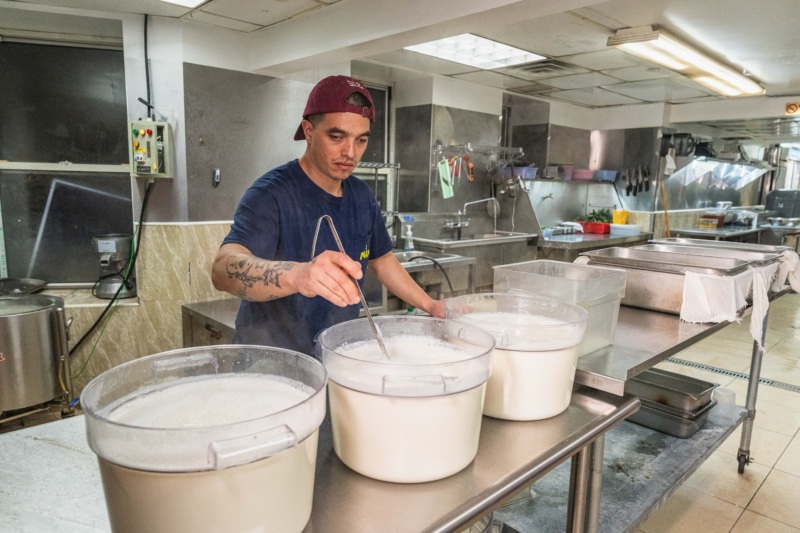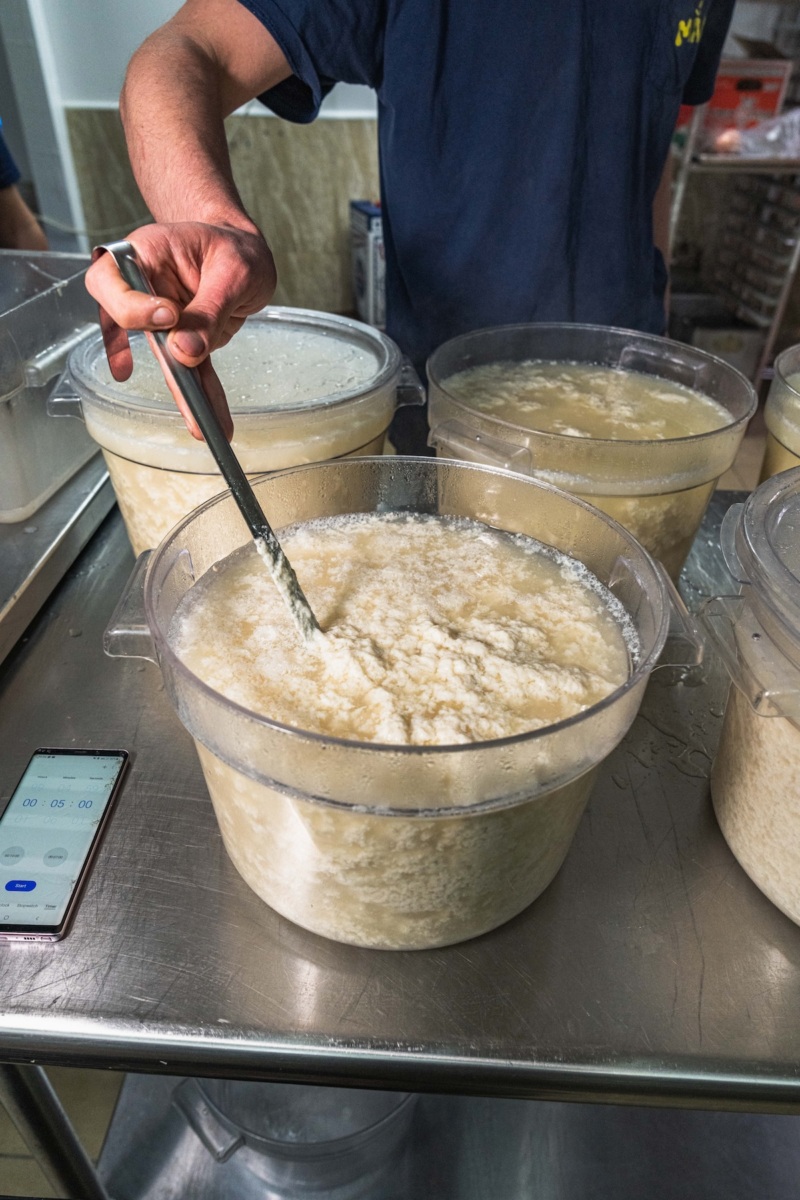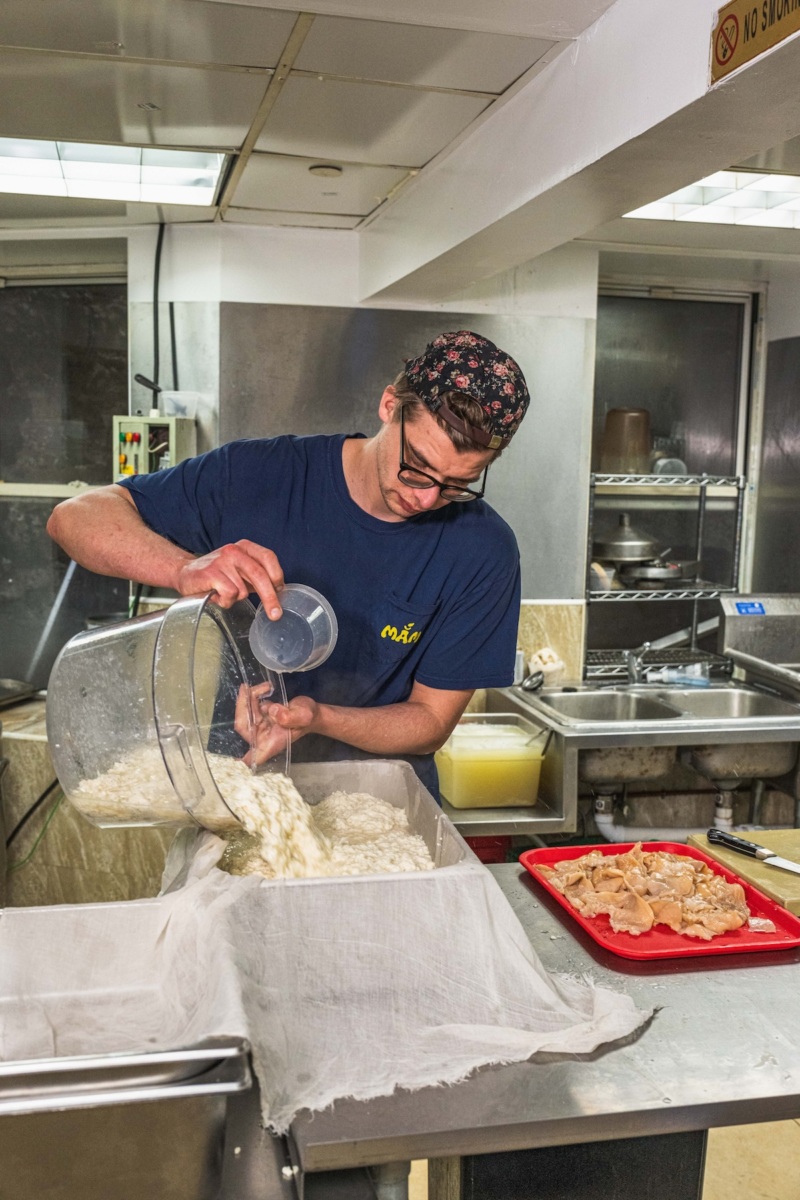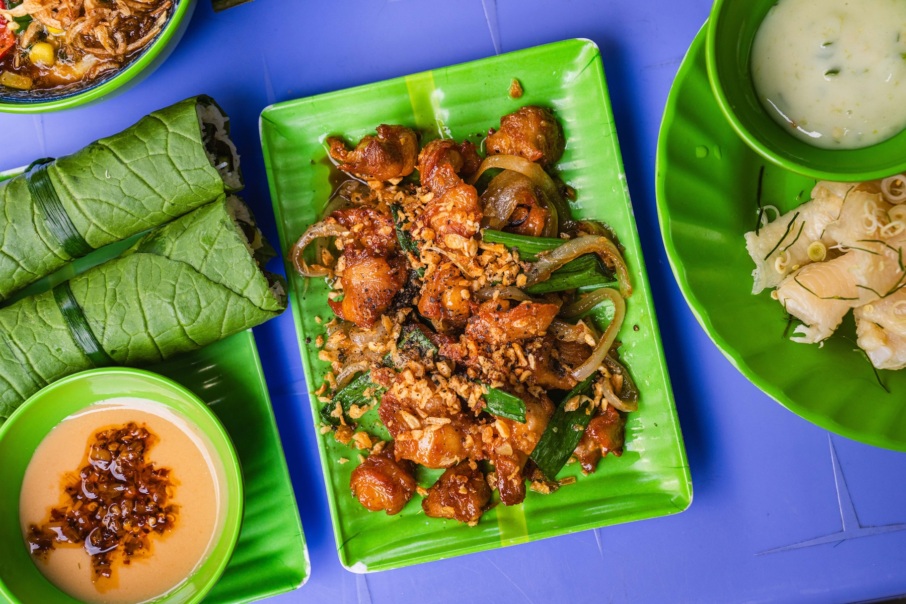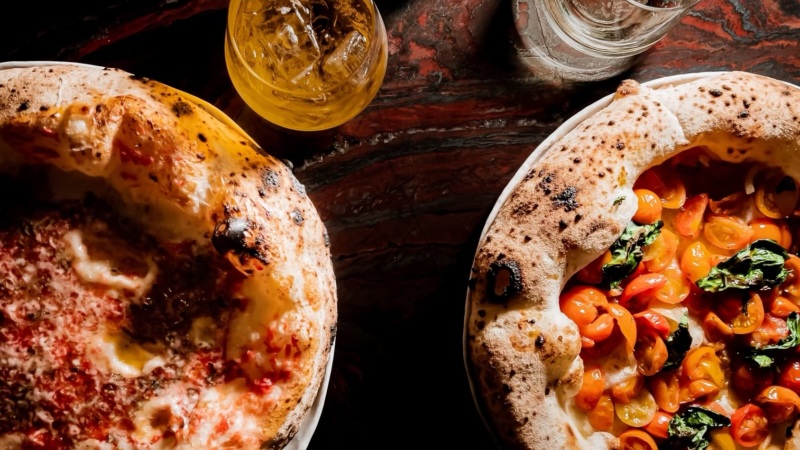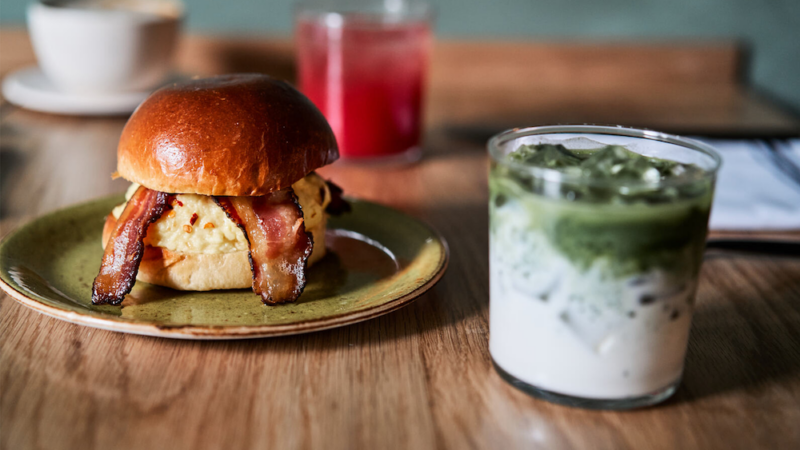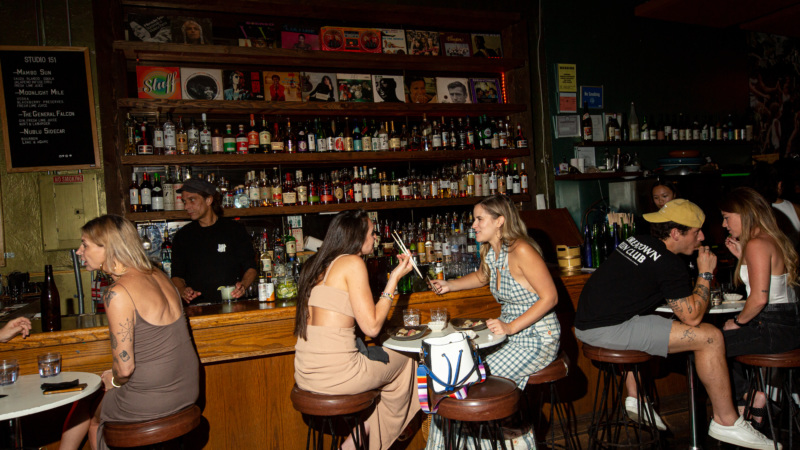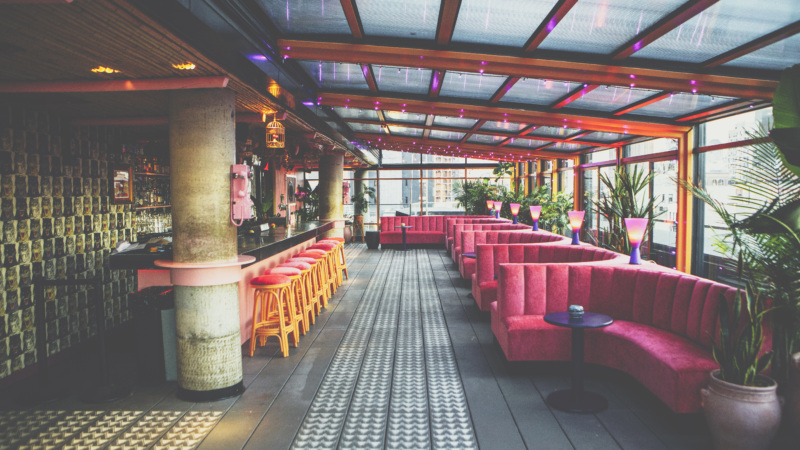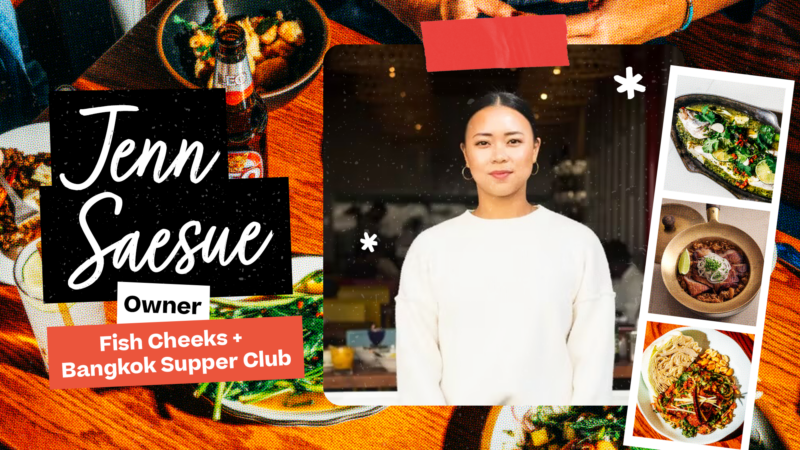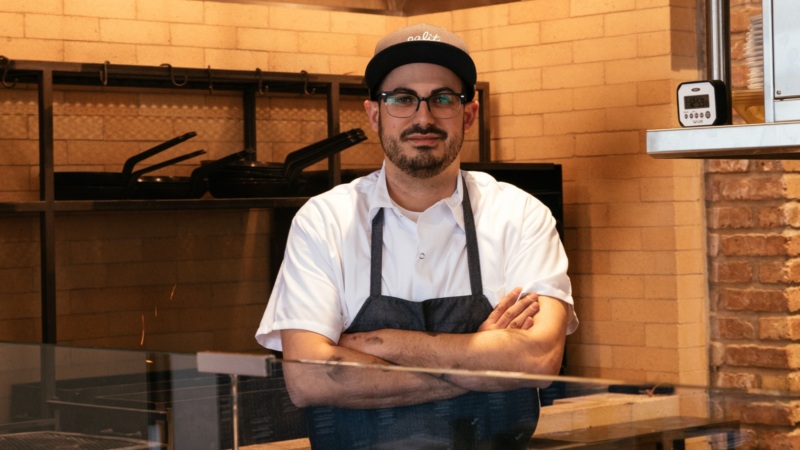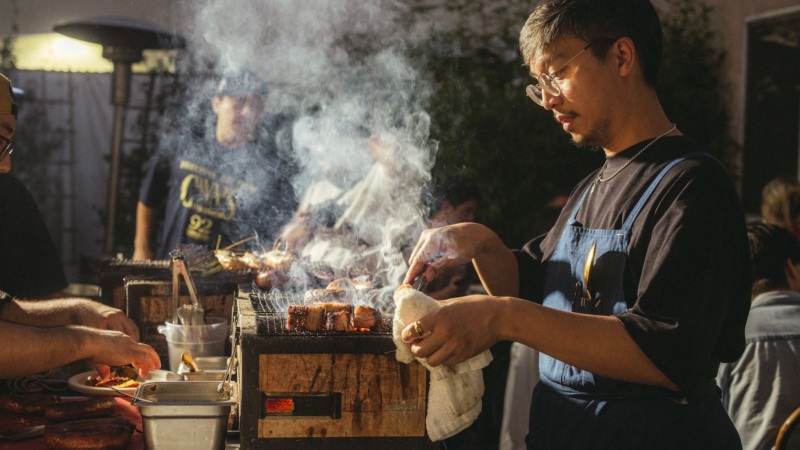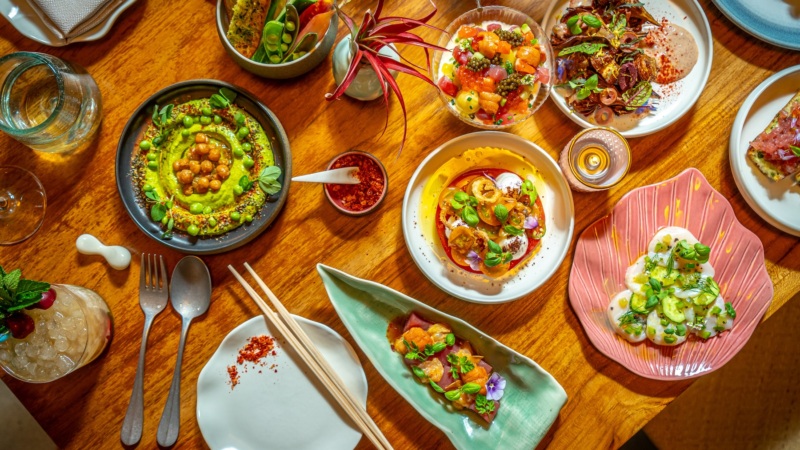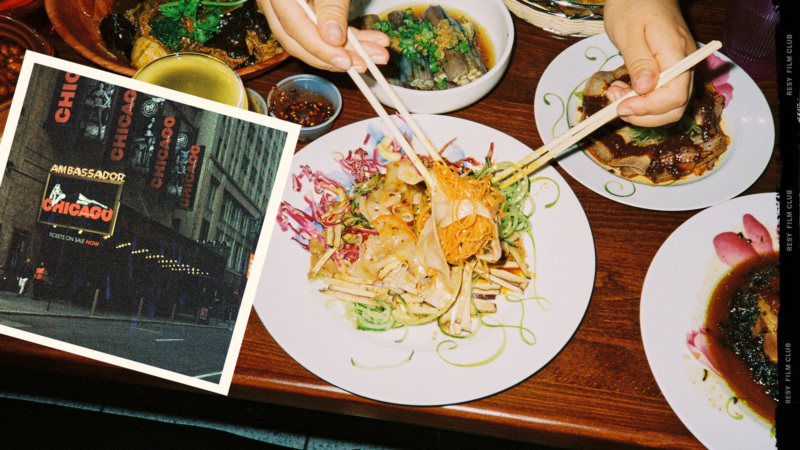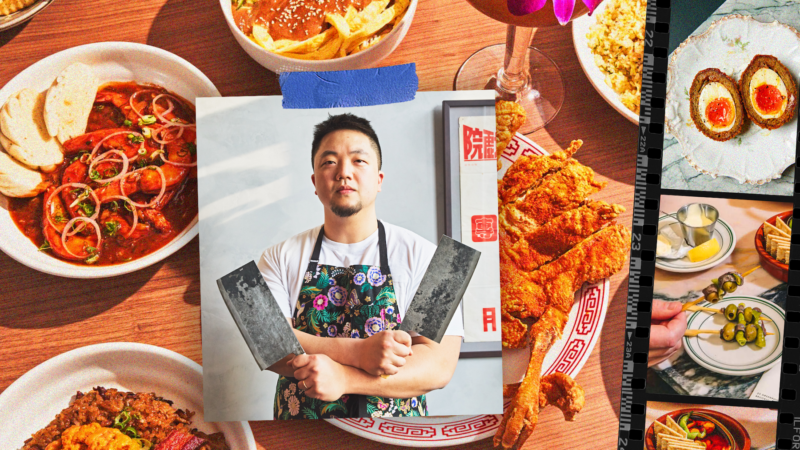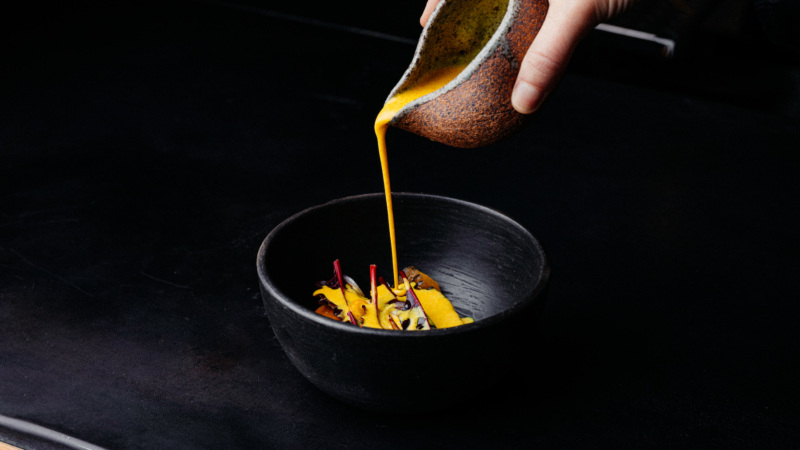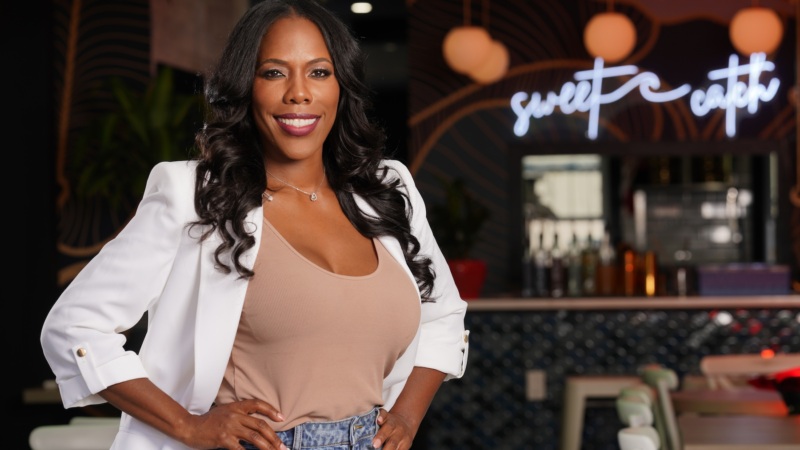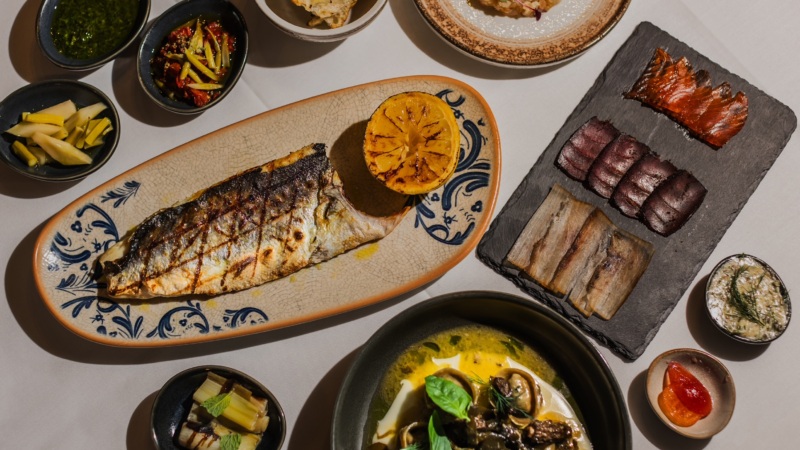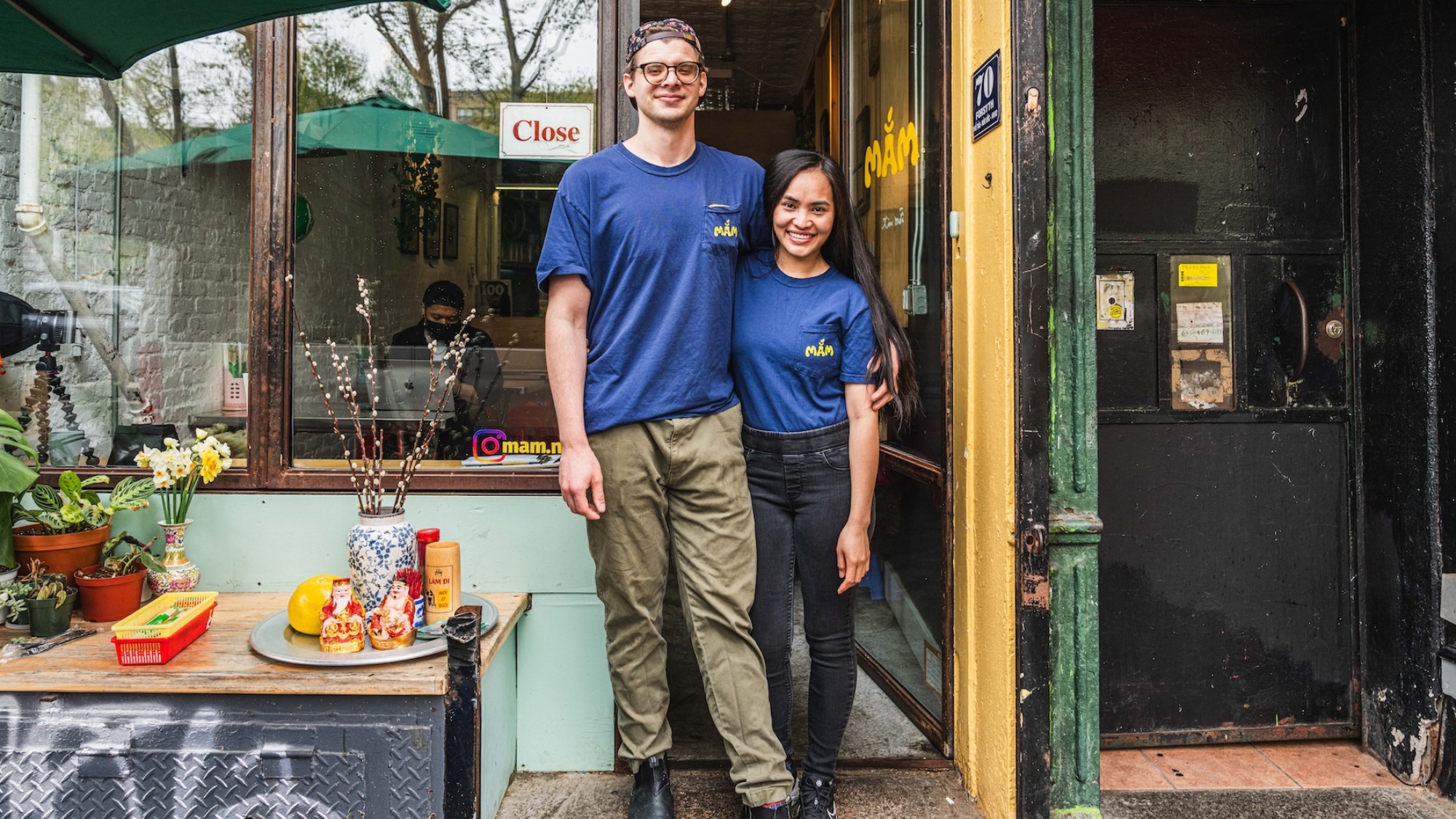
How Mắm, Once a Humble Pop-Up, Is Shifting Perceptions of Vietnamese Food in New York
Mayukh Sen is the James Beard Award-winning author of Taste Makers (2021) and the forthcoming Love, Queenie (2025). Ben Hon is a New York-based photographer and creator behind @stuffbeneats.
Four years ago, when the pandemic was still in its infancy, Jerald Head began writing a book. He had just departed his job as the chef de cuisine at the Greenpoint restaurant Di An Di, and he now had ample time to kill. He had no formal book contract and no publisher, only a name for this dream project of his: Mắm.
The word refers to a fermented substance, usually fish, that forms the bedrock of Vietnamese cooking. Mắm, he explains one rain-soaked afternoon this April, isn’t just a flavoring agent but an element that harmonizes a dish’s competing notes into a cogent whole. “It’s kind of like the soul of what makes Viet cuisine, Viet,” he says.
He didn’t get too far with the book. His authorial plans fell by the wayside once his wife, Nhung Dao, immigrated to America that year permanently from her native Vietnam. They’d now spend their days in Brooklyn making bún đậu, a rice noodle dish that Jerald describes as “a tray full of texture and flavor that all gets tied together with a very pungent fermented shrimp paste named mắm tôm.”
Soon after, the couple began hosting intermittent pop-ups, including at the site of Jerald’s former employer, Di An Di. Industry contacts that September then asked the couple if they’d be interested in running that pop-up a few days a week out of the space formerly occupied by the restaurant Bếp Gà, on the Lower East Side. They heeded the call, deciding to christen their project Mắm, like the very book Jerald jettisoned.
After a period when the pandemic brutalized the New York restaurant industry, Mắm’s trajectory from sporadic pop-up to a permanent brick-and-mortar location (complete with an expansion next door late last year) might strike some as an underdog success story. The restaurant certainly isn’t wanting for attention: Pete Wells of The New York Times has included it twice in his list of the city’s best restaurants. Framed prints of those citations line the walls of the charmingly cramped space at 70 Forsyth, outfitted with cotton candy-blue stools. Bottles of Red Boat fish sauce and Southern Star-brand cans of sweetened, condensed coffee creamer sit on the shelves.
Mắm’s bún đậu, the dish that cradled the couple through the uncertainty of the early pandemic, remains the star of its menu. It’s adorned with fixings like crisp cubes of tofu, fried until they’re practically golden, and coins of plum-purple blood sausage that collapse on the tongue. (Those two ingredients, by the way, are housemade, a matter the couple takes great pride in; their tofu is juicier and less spongy than the kind you’d find in American supermarkets, they say.) The purpose of their cooking, after all, has never been to cater to American palates.
“This is Vietnamese food, we serve it for Vietnamese people,” Jerald says. “If other people appreciate it, that’s awesome.”


This is Vietnamese food, we serve it for Vietnamese people. If other people appreciate it, that’s awesome.
*****
The couple met by happenstance one morning in 2016, when Jerald, then 25, was visiting Ho Chi Minh City (the city the couple refers to as Saigon), eating breakfast at a street side stall. He was struck by the sight of a young woman who was trying — loudly — to place an order for an avocado smoothie against the city’s din. He gathered the courage to approach her.
“You’re so beautiful,” he muttered to her in rookie Vietnamese, unknowingly disregarding the rules of the language and referring to her as if she were his older sister.
“In my mind, I say, ‘OK … I’m your sister? I’m older?’” Nhung Dao laughs. She thought he was an international student from a nearby college.
The two cottoned to one another after that endearingly awkward start — they married in 2018 — despite the differences in their backgrounds. Jerald had come of age near San Antonio, Texas, raised on a diet of frozen pizzas and Hot Pockets. His mother was “essentially a single mom, and just tried to make do,” he says. “Dinner wasn’t something that we would cook.”
Despite this, Jerald fell into the restaurant industry right out of high school, drawn to its kineticism. “I just fell in love with — first with the energy of fast-paced restaurants, the adrenaline that comes with that,” he says.
During a stint as a cook at a high-end restaurant in San Antonio, Jerald was invited by his colleagues to a Vietnamese restaurant. “I was like, oh, man, these cooks I look up to invited me to come hang out. I was like, hell yeah,” he says. “And Vietnamese food? What could that possibly be? I just had no idea.”
He ordered what he reckoned must’ve been the most adventurous item on the menu: bún bò huế, a central-style noodle soup with coagulated pork blood and pig’s trotter. He was hooked on Vietnamese cooking from then on. Not long after, his then-boss gifted him a copy of the chef Charles Phan’s compendious cookbook, The Slanted Door (2014), and he tore through its recipes.
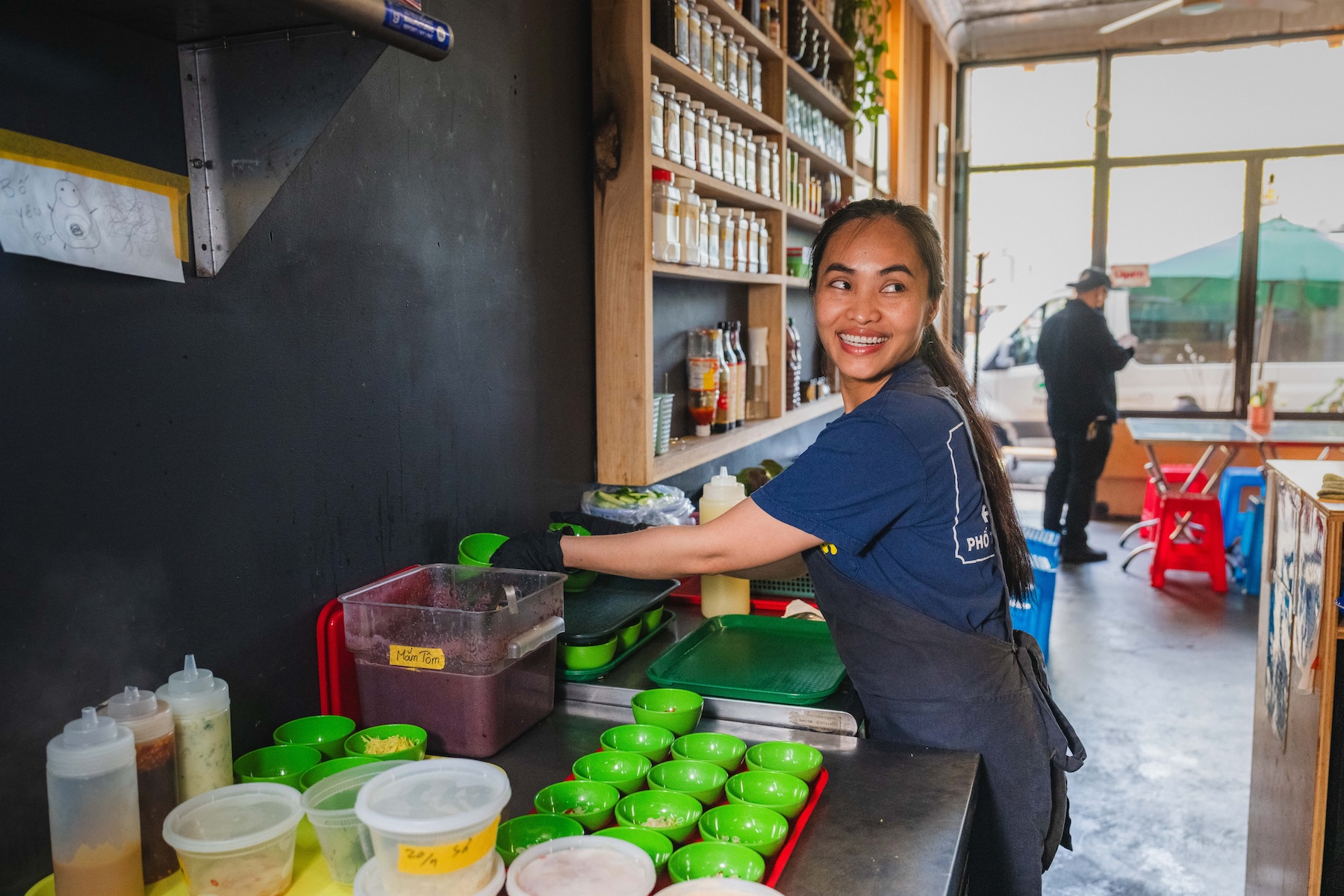
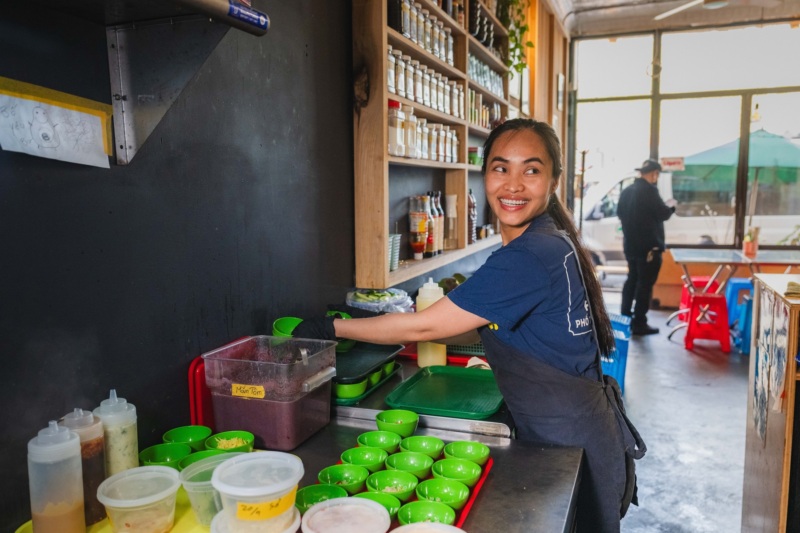
For Nhung Dao, food had always been central to her life in Vietnam, even if she hadn’t devoted herself to cooking vocationally when she met Jerald in 2016 (she was working an office job then). She’d grown up about an hour south of Hanoi in the village of Tu Van, a place the couple describes in ramshackle terms: a site of dirt roads and an absence of plumbing, its population around a mere thousand people.
Though Nhung Dao’s family moved down south to Saigon around the time she was 10, food remained the heartbeat of their unit wherever they went. They always cooked at home, because it was all they could afford. She also learned, early on, how to cook at scale: for family weddings or parties, for example, with hundreds of people. “So, I learned it from family: I learned how to cook, I learned how to prep,” she says.
That home cooking ethos would serve the couple well years later when they began Mắm as a pop-up. The two were fitting foils for one another: Jerald, having cut his teeth in San Antonio and New York restaurants, understood the pragmatic realities of the industry, while Nhung Dao brought her inherent knowledge of Vietnamese cooking — the kind you can’t easily obtain unless you grow up with it — to the operation.
Making a dish one hundred times a night, though, was a learning curve for them both when Mắm first began as a pop-up in 2020. Though the 70 Forsyth space changed hands a few times after Bếp Gà’s closure in 2021, Mắm continued to operate periodic pop-ups until 2022, after which they decided to take over the space for good. “After I had that taste of our pop-ups and making our own dollar, it was really hard to work for somebody else again,” Jerald says.
Mắm was quick to strike a chord with diners, but what the couple found particularly meaningful was the resonance their food had with Vietnamese patrons, ones who could not access the tastes of their homeland easily due to practical circumstances.
“It became something real special in the sense that, how many Vietnamese guests come, and just thoroughly enjoy the experience, and how it takes them back to Vietnam,” Jerald says. “Especially at that time, from 2020 to 2022, nobody could even travel back to Vietnam because the border was closed.”
Though New York might today seem flush with Vietnamese offerings — beyond the aforementioned Di An Di, spots like Saigon Social have also been heralded by diners — that wasn’t always the case. Vietnamese restaurants have a decades-long history in America stretching back to the 1970s, when a wave of restaurateurs began posting up in metropolitan areas like San Jose and Westminster, both in California, and Houston, Texas. New York City, though, was comparatively much slower on the uptake. When the famed New York Times food critic Craig Claiborne reviewed New York City restaurant the Viet Nam for the paper in 1961, he surmised it was the only restaurant to serve Vietnamese cooking in the entire country. He would lament the paltry lack of options in New York City in 1986, the year of his retirement from the paper.
The reasons why New York hasn’t seen the same wide embrace of Vietnamese cooking are manifold — for one, the city’s cost of living may have been a deterrent for new arrivals — but what has resulted is a lack of a locus, like a Little Vietnam, for Vietnamese immigrants and their diaspora in the city. It was only in later decades that mainstays like phở or bánh mì would manage to break through to New Yorkers (indeed, even Mắm recently served bowls of hearty beef phở for the winter).
Nowadays, the landscape for Vietnamese food in New York has changed for the better, say Tuan Bui and Kim Hoang, two of the founders of Di An Di. The city’s inhabitants no longer perceive Vietnamese cuisine in stereotypical or confined terms. “It’s not really about stereotypes,” Bui says. “I think New York diners are savvy, well traveled, and open to new flavors.” Long gone are the days when the city’s diners may have seen phở or bánh mi as the only gateway to Vietnamese food; now, more curious New Yorkers might be eager to seek out, say, Vietnam’s vast variety of noodle soups.


This is precisely why the pair at Di An Di wanted to go beyond offering those usual suspects upon opening their restaurant in 2018. “We wanted to put our best foot forward with the cuisine that honestly represented us as first-generation Vietnamese Americans with strong influences from our regular travels to Vietnam and what we grew up eating as children of refugees,” Bui and Hoang say.
To them, Mắm approaches a similar mission from a different angle. “Mắm is able to execute and offer Vietnamese dishes not so familiar to New Yorkers that reflect the bold flavors and authentic experience one would have as a Vietnamese local,” Bui and Hoang say, adding that the restaurant offers specialty dishes “without watering down flavors for the Western palate.”
Indeed, the couple behind Mắm tries their best not to compromise the purity of their vision according to the demands of the clientele in their neighborhood. That hasn’t always been easy: Jerald himself admits he sometimes wondered how prudent it was to put an item like fermented shrimp paste on the menu given how it could’ve easily turned off an incurious diner, especially when he has material considerations like rent to keep in mind.
The couple’s aim isn’t to deviate from tradition, straining for creativity for the sake of brownie points. They shy away from words like “reinvent” when describing their food, for example. Theirs isn’t a flashy interpretation of Vietnamese cooking but a spotlight on a sometimes overlooked side of it.
“It’s really cool because a lot of people that may have — that aren’t Vietnamese, that have a set perception of what Vietnamese food is,” Jerald says, “and they come into Mắm, and it’s just like, holy shit, this Vietnamese food?”
That’s the very reaction they provoke when putting chicken cartilage, caramelized and fried into crunchy nuggets, on the menu. The couple is also partial to the restaurant’s snail sausages — they stuff the animal’s teakwood-brown shells with pork and strings of lemongrass, forcing you to pull them out with your hands, as if you’re a magician reaching into his top hat, and dip them into a pool of punchy fish sauce.
The menu changes often, according to the seasons and their creative whims. This shapeshifting menu is one of the challenges of keeping Mắm afloat in its new, mature avatar. Hype generates demand that’s sometimes tough to meet with a threadbare staff of seven people (the couple included). The Heads have eliminated tips, quietly, with the aim of evenly compensating their staff: Maybe a server couldn’t accomplish the work of a cook, but the former might make more in one night than the latter makes in an entire week; where’s the justice in that? The bureaucratic hoops that the city makes restaurants like theirs leap through can be cumbersome, too, they say.
“I’ve been a chef and helped operate businesses, but being on the backend of it and just firsthand experiencing all the red tape and dealing with insurance policies and dadada, it really saps a lot of the fun out of it, for sure,” Jerald says.
But they wouldn’t have it any other way. The couple behind Mắm is shy about articulating their future plans in any specific terms (though the team behind Di An Di alludes, vaguely, to collaborating on a “forthcoming project” with Mắm).
“I hope we continue to push out good Vietnamese food with integrity, without any slippage in standards,” Jerald says. “That’s kind of how it goes as people expand. Which — we do hope to expand, but kind of organically, on this block. And, who knows? Maybe one day this block could be known as a Little —”
Nhung Dao chimes in, and the two finish the sentence in unison: “Little Vietnam.”
Mắm is open for dinner on Mondays, Thursdays, and Fridays, and for lunch on Saturdays and Sundays.
Mayukh Sen is the James Beard Award-winning author of Taste Makers (2021) and the forthcoming Love, Queenie (2025). His work has been anthologized in three editions of The Best American Food Writing. Follow him on Instagram.
Ben Hon is a New York-based photographer. Follow him on Instagram. Follow Resy, too.









